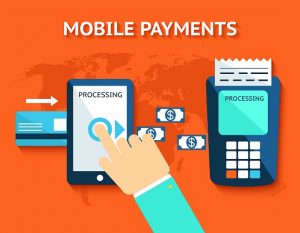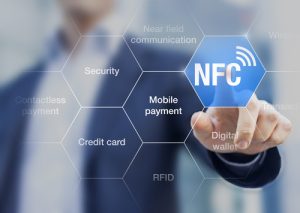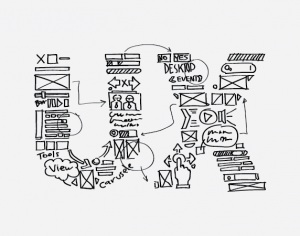Category: Mobility
A major decision to take upfront when developing an iOS application is the choice of programming language. Among the options available, Swift, Apple’s new multi-paradigm, compiled language, is fast gaining traction as the preferred one, posing a serious challenge to the dominance of Objective-C.
Get the Best of Both Worlds
The tremendous popularity of Swift may seem misplaced, considering the language was introduced only in October 2014 and hasn’t had the time to mature fully. However, many developers prefer Swift exactly for such nascence, taking it a challenge to discover new features and review the finer details, before others get there first.
In any case, the brains behind the Swift project have a combined experience of several years in developing earlier languages. Swift benefits from such experience, sparing itself a lengthy trial-and-error and learning curve maturity cycle. Swift gets the best of worlds, packing in excellent features minus the pitfalls or drawbacks associated with earlier languages.
Swift is a step closer to unify writing of build scripts. Swift draws its syntax from incumbents such as C, Objective-C, and Ruby. It uses the run time employed by Objective-C, allowing Swift code to run together with C, Objective-C, and Objective-C++ code, in a single program. In fact, many developers now combine Swift 3 interfaces with Objective-C APIs to pack in maximum power to their apps.
Leverage the Power of Simplicity
Swift harnesses the power of simplicity, offering a simple code, with concise syntax.
Swift reduces the code length significantly, making it not just easier to learn and write the code, but also saving all-important time. For example, Objective-C has two files for the class definition, forcing changes in two places to define a method. Swift, in contrast, has just one file. Writing code in Swift takes just about half the time required to write the code in other languages, on average. Re-writing Lyft, a popular iOS app resulted in the code reducing from 75,000 lines in Objective-C to just 25,000 lines in Swift, without influencing the performance of the app in any way.
The simplicity of the code in no way compromises the power or features. Apple developers claim Swift as “the first industrial-quality systems programming language that is as expressive and enjoyable as a scripting language.”
Swift packs in powerful functionality inside the simple code, making the language very expressive.
- The code syntax helps to auto-correct common developer mistakes, improving safety and stability manifold. The “inferred typing” feature infers the variable type, sparing developers the effort, and also the potential to make mistakes while doing so.
- The automatic garbage collection feature manages memory automatically, disposing of unneeded information sitting in the memory, sparing developers the hassles.
- The concise “closures” feature makes it very easy to develop a small code piece to collect information for the program on a repeated basis.
Swift also adds fun to the development process. For instance, developers can add emojis to the code!
The power-packed Swift code is very fast as well. Swift 2.0 beats C++ in Mandelbrot algorithm and other competition algorithms. It is significantly quicker than the legacy C API saddled Objective-C.
Gain from an Interactive and Collaborative Effort
Swift’s “interactive playground” allow developers a sneak peek at the results of a piece of code. The preview appears as soon as they type it. This feature, apart from making the developer’s life easier, also boosts innovation. For example, developers can exploit some clever tricks using functional elements, such as ‘map’ and ‘filter.’
One big decision that allowed Swift to gain considerable traction is its open source model. Though Swift still has a relatively smaller user community, the community is growing fast, and even big IT companies are now switching from Objective-C to Swift for major projects platforms.
The selection of a suitable language can impact the success of a project in a big way. Swift has lowered entry level barriers to iOS app programming, empowering even average programmers to develop iPhone applications quickly. However, the success of the app still depends on a robust design and architecture, talented developers who are abreast with the latest developments and know how to leverage it, and the ability to exploit the several innovative possibilities that the program offers. Partner with us for your iOS app development process to use the full potential of this innovative new platform.
Stay up to date on what's new

Featured Blogs
Stay up to date on
what's new



Talk To Our Experts
Mobile payments are of a recent origin but have caught on like wildfire. Mobile-driven commerce now exceeds US$972.25 billion, and mobile payments are expected to touch US$3 trillion by 2021. This figure will equate to about 11% of all consumer card payment volume, up from the present levels of 6%.
Here are the top trends shaping mobile payments market.
Demographics Shape Mobile Payment Growth
The bulk of the growth in mobile payments market is from the Asia-Pacific region, especially China. Chinese customers now make more payments through mobile devices than through desktops. The high level of smartphone penetration cuts across both urban and rural areas.
The mobile-first mindset is catching up in the US and the UK as well. By 2020, more consumers in these countries will make payments for goods and services over smartphones than through desktops. About 46% of all digital commerce in the US and 38% of all digital commerce in the UK would be through a mobile device by 2020, up from 20% and 12% respectively, in 2015.
It comes as no surprise that cutting across geographies, the up-and-coming generations are in the forefront of adopting new technologies, and embracing mobile wallets in big numbers.
Convenience of On-the-Go Consumption Drives Growth
The chief factor driving the growth of mobile payments market is convenience.
M-payment allows consumers to transfer money for the purchase of goods and services, pay utility bills, collect paychecks, take insurance, make loans, and do much more, all with just their smartphone or tablet. People can either retain some money in their mobile wallet or link their bank account to the mobile wallet.
Furthermore, mobile devices make it very easy for people to conduct online transactions when commuting, or in the middle of doing something else. A consumer, having seen a hoarding when commuting to the office, no longer need to wait to get in front of a computer, but can rather pick up her smartphone and purchase the product immediately. Such a high level of on-the-go consumption is facilitated by the availability of user-friendly apps, which in turn is powered by mass subscriber volumes resulting from high levels of smartphone penetration, and widespread internet connection.
The Rise of Biometrics
Even as mobile payments surge, security remains a prime concern. Considering 70% of online fraud taking place through identity theft, the stakeholders of the mobile payment industry are increasingly looking at biometrics as a means to contain fraud. Biometric authentication involves validating the transaction based on the user’s fingerprints, iris and retina scanning, facial recognition, voice, or any other unique feature. With more and more smartphones now featuring fingerprint scanners, and other biometric enabling options, biometric authentication will become a common feature in the coming years.
The Quandary of Proximity Payments
The bulk of mobile payments today is remote mobile payments. The other side of mobile payments, proximity payments, is yet tot to gain sufficient traction, despite the potential. Gartner estimates money transfer to continue dominating mobile transactions, with an estimated 67% share in 2017, and predicts an overall annual growth of 35% in mobile transaction value, between 2013 and 2017. Nevertheless, with more and more traditional cash-only services, from taxis to hairdressers and from cleaning services to bakeries now able to accept mobile payments, proximity payments is sure to catch up in the near future.
What has restrained proximity payments so far is the big security hole in NFC, the enabling technology, as exposed by Charlie Miller, a smartphone hacker, in a 2012 Black Hat security conference. The rise of Bluetooth Low Energy (BLE), an alternative and more promising technology, coupled with several providers such as AliPay offering hassle-free mobile wallets means proximity payments is on the cusp of being the next big thing in mobile internet.
The Rise of Virtual Currencies
E-money ranging from bitcoins to Facebook Credits, and from egold to merchant loyalty points are becoming more and more popular. Such virtual currencies create a lock or loyalty, as it cannot be transferred outside of the system easily. While mainstream m-payment solutions steer clear of many such payment options owing to its legal gray area, there is increasing interest in the technology that drives such cryptocurrencies.
Supporting virtual currency such as bitcoins is peer-to-peer payment infrastructure, which allows making payments to any payee in the network, without routing it through a central agency or middleman. Such transactions are more robust, and is now very popular in the dark internet, for under-the-hood and illegal transactions. Whether currencies such as bitcoins will become mainstream is to be seen, but infrastructure such as peer to peer networks is sure to be adopted by legit providers as well, displacing existing m-payment systems, owing to its inherent security advantages.
The payment industry is in the midst of a new Gold Rush. In 2010-2011, about 700 companies invested about USD $3.4 billion in innovation related to the payments sector, and many of such investments are bearing fruit now. Gartner estimates global mobile transaction volume and value to average 35% annual growth between 2012 and 2017 and forecast a market worth $721 billion, and more than 450 million users, by 2017.
Despite the current limitations such as lack of a universally enforceable standard, m-payment is on its way to becoming a viable alternative to physical currency. E-tailers and other businesses are certain to lose out if they do not prepare for the mobile payment space. Success depends on setting up a robust and easy infrastructure, and this is best served by partnering with an experienced and resourceful provider, who has both the experience to do a good job, and the ingenuity to leverage the latest advancement and develop cutting-edge solutions. We fit the bill in all counts. Contact us today for all your m-payment requirements.
Stay up to date on what's new

Featured Blogs
Stay up to date on
what's new



Talk To Our Experts
Mobility is in the midst of a golden run, with smartphones and tablets the medium of choice for the always harried and on-the-move enterprise users. Paradoxically, the mobile boom has made life difficult for enterprise mobility solution developers. Even as the vibrant mobility development space offers plenty of opportunities, a plethora of challenges stump developers.
The Challenge of Emerging Technologies
Mobile developers struggle to play catch up, to release updates and make their apps relevant in the face of fast-paced developments in OS and hardware technology. The following are a few cases in point.
- The sheer volumes of iOS APIs unleashed in recent times overwhelms even the most competent app developer.
- Enterprise developers estimating which new tooling features might align to their apps’ features are now a routine occurrence. More often than not, developers miss the update and scurry to fix the code.
The pace of change compounds the misery. Where developers rolled out updates in 30 days before, they find the need to update the code in just one or two days, or else run the risk of their apps turning dysfunctional.
There is no shortcut to solve the imbroglio. The best developers remain on tenterhooks, tracking emerging technologies and maturing standards, and regard app development as a constant exercise rather than as one-off projects.
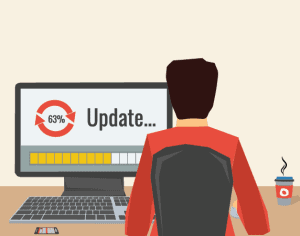
The Challenge of Device Fragmentation
The hopelessly fragmented digital marketplace, a result of the constant treadmill of new devices and OS, compound the misery of the app developer. Today’s app developers are virtually working blind, not knowing their target platform.
The sheer number of devices in the market makes it virtually impossible to test the app for all usage scenario permutations and combinations. Cloud-based simulated testing, clearly the future of app testing, however, is just taking off. As things stand, developers face a Hobson’s choice on which device to invest for testing their apps.
Until not too long ago, enterprise mobility solution developers were immune from this challenge, as they could focus their efforts on the limited number of platforms and OS used by the enterprise. However, Bring-Your-Own-Device (BYOD) policies now force enterprise apps to support a variety of mobile devices. Gartner predicts half of all employers to require employees to BYOD, by 2017.
While there is no shortcut to testing the app on multiple browsers and multiple carrier connections, developers can optimize their development and testing efforts by:
- Targeting the most likely platforms in which the app would run.
- Employing consistent and reliable development practices across all leading platforms, ensuring consistency in look and feel.
- Creating globally recognizable but culturally sensitive graphics.
App developers also need to be on guard against the focus on usability distracting them from testing other crucial elements, such as whether their apps are battery hogs.
UX Challenges
User Experience (UX) makes or breaks an app. Forrester estimates about 64% of employees not using enterprise mobile apps, owing to poor UX. Enterprise users, hard pressed for time, always value simplicity. The challenge for app developers is to pack in the required functionality, and ensure the app meets the required aesthetics related to corporate branding, while still ensuring simplicity.
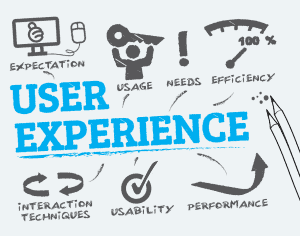
Opting for a responsive design to attain mastery of the cross-platform scenario is a good first step, and a minimalist approach to design is a good second step. However, success ultimately depends on how best the screen real estate is put to use. Intuitive use of icons often creates a useful and natural mobile UX. Equipping the app with analytics to track engagement metrics, monitoring crash logs, and a structured feedback mechanism help developers fine tune their apps, but app developers still; have a challenge in setting up these processes.
Security Challenges
The fragmented digital marketplace raises big security challenges as well. Each operating system has its own custom architecture, and different mobile platforms offer varying degrees of support for securing the data stored on the device. Another challenge is reconciling the actual level of security needed.

It is always a good idea to encrypt data and keep it in a secure container inside the device. Another best practice is integration with the enterprise’s LDAP directory, to ensure proper authentication and single-sign-on (SSO) across all enterprises apps. Opting for server-side validation, instead of client side validation prevents complex validations from dragging down the app to a crawl. However, many mobility solution developers forget security is a flexible thing, and blindly apply such best practices across-the-board. While multi-factor authentication is understandable in banking apps that facilitate bill pay, the same level of security will be an overkill, and a big put-off for an informational app.
Challenges Related to Content Management and Data Access
Access to corporate data, often sensitive in nature, is critical for most enterprise mobile solutions. Such data usually resides in a backend database. Developers need to decide on how best to access such data, and whether to store the accessed data in the device’s native file system, for offline access. Either way, ensuring seamless sync of data between the app and the backend is a challenge.
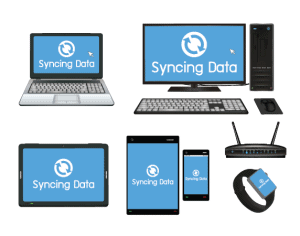
Enterprise mobility solution developers need to sit down with business managers and understand the business process, to get data access right. For instance, a field salesperson may need to download inventory data when meeting a client, in a place where there is no network. In such an eventuality, the app would also require not just data storage capabilities, but also synchronization capabilities to update the inventory once the salesperson returns online. The app also needs to understand when a connection is dropped, to roll back to its last-known data.
A related challenge is bundling all diverse content type, be it videos, images, animation, or text, into monolithic expansion files, as required by many app stores.
Challenge of Development Technology
HTML5-CSS3 based cross-platform development generally offers advantages in terms of cost, reduced time-to-market, and portability across platforms. However, HTML5 is not without its drawbacks either, such as limitations in local data storage, security concerns, and more. Many developers opt for native, platform specific development for better UX and superior application performance, but such advantages often come at a high cost, and increase time-to-market considerably. Enterprise mobility solution developers have a task on their hand, not just identifying a development technology, but trying to get the best of both worlds.
Understanding user requirements to the last detail is the key to deciding on the development approach. There is no workaround to technical competency in doing the job well, regardless of the approach chosen.
The success of enterprise mobility solution development lies not just in developing the app, but also ensuring a smooth and efficient distribution system. The developer can hardly afford to rest on her laurels, having overcome all the challenges they faced during the development phase. They still need to manage application stores, manage integrated device management, and brace themselves for the never ending update cycles.
If your enterprise requires mobility solutions, as most enterprises nowadays do, a competent partner who knows their stuff makes life easy, and will improve the worth of your mobility solutions manifold. Get in touch with us for everything related to enterprise mobility solutions.
Stay up to date on what's new

Featured Blogs
Stay up to date on
what's new



Talk To Our Experts
While security remains a pressing concern in the mobility space in continental Europe, UX is now emerging as a bigger investment area, in the English-speaking world of UK and US.
The increasing investment in UX syncs with the preferences of today’s highly demanding customers, who value a hassle-free engagement, without having to struggle to consume information. Even users of enterprise apps now expect a visual appeal, or UX similar to what they find with games and other consumer apps.
Traditionally, UX and security have been inversely linked, with improvements in security often getting in the way of UX. For instance, the common requirement of having to reset password once in two weeks makes the account more secure, but impede usability. Similarly, blocking file download from an unknown IP address may prevent a hacker from accessing the data, but also prevents the user from accessing his own data when he needs it, on the move.
The best security is invisible, working away in the background, keeping digital assets safe without the user even noticing the workings. While the ground reality is far from such an ideal state in most enterprises, there is now growing realization that the tendency to push in too many security features, especially in an already stressed mobility space, can drive away users, or worse, prompt them to seek out loopholes.
The solution, however, is not to throw security out with the UX bathwater, but rather deliver a seamless UX yet uncompromising on any security considerations. This requires a change of approach, best exemplified by an allegory of locks. While the existing approach resembles adding more number of locks to a door, which while keeping trespassers away also makes it more difficult for the genuine user to get it, the new approach tries to offer only a single, but an unbreakable lock. Mobility investments are flowing in this direction.
One way to reconcile security with UX is the “security by design” approach, or building in security early in the development process, rather than co-opt it as an awkward extra layer in the end, akin to manufacturing a door with a deadbolt lock built-in rather than affixing locks after installing the door.
But what exactly is the difference, one may be left wondering?
Consider an approach where users need to enter their login credentials every time and access to a specific section or resource depends on the credentials provided and another approach where there is a tight control on what each and every user can see, based on a need-to-see basis incorporated at the design stage itself. A user, rather than being prevented from peeking at data, not for their eyes, may not be served with means to access to such data in the first place. For example, the sales team may be given an app that offers all sales data, but not information that pickers in the warehouse access through their apps, and managers have another set of apps, offering a far wider range of data and information.
Another approach to reconciling the divide between security and UX is through the hardware. A case in point is Apple’s Touch ID fingerprint scanner and similar systems on Android smartphones. When hardware becomes the trusted security medium, UX can be spared from having to authenticating users. The assumption, of course, is only the right users will have access to the hardware in the first place.
Yet another approach is not to break it, but explain it. At times, there’s no workaround for a security procedure that impedes a smooth UX. In fact, focusing too much on usability may be counter-intuitive, for what is the easiest and most convenient may not be in the best interests of security. A confusing interface may best be solved with a tutorial, a FAQ page, or some help videos, rather than breaking the interface for the sake of UX and impede security in the process. There is also the issue of writing earning message in a way users understand, focusing on the implications of an unsafe action, rather than harping on technical jargon.
Security is all-important, but only if there are users available in the first place. A poor UX in today’s highly demanding and competitive age would simply drive away users, making rigid security protocols self-defeating and redundant. Developers are widening up to this all-important logjam and investing big in UX, but such focus should be with the understanding that UX and security aren’t necessarily at odds, and the duo even benefits each other.
Your best bet in developing state of the art mobility software that offers the best of both worlds is partnering with us. Our experienced and versatile team of developers understand both UX issues and security considerations and help you roll out software and apps that fit the bill perfectly.
Stay up to date on what's new

Featured Blogs
Stay up to date on
what's new



Talk To Our Experts
By the late 1980’s the prominent sound of “ding, ding, zip” of the typewriters that reverbed through the office halls gave way for a softer, mimicked, mechanical feel of the typewriters. The computer keyboards with time evolved, making it the familiar yet a distinct avatar of the faithful typewriters of the past. What changed was more than just the mechanical clinker in the office halls; they gave rise to a new status quo on how work was performed and what could be achieved by ideally leveraging the computers.
A Digital Revolution
A little bit of reflection on the successful business of our times like Facebook, WhatsApp, Zynga, Twitter, Square, Netflix, points to the fact that, these companies were either born digital or made efforts to alter their business to becoming digital. The companies that innovated, the ones that laid the old to rest, followed a process of creative destruction. What businesses have to remember is that, most of the times the employees and the customers have got a faster affinity to adapt to changing technology. This adoption would only be followed by an expectation that the business that they interact with, also follows suit. For B2B players it becomes important that they use Mobile, Big Data, IoT, 5G, and augmented reality for revolutionising the customer experience, optimising operational and industrial processes, innovating rapidly, bringing faster cash cycles, driving employee productivity and for improved service enhancements.
Statistics shows that there would be 6.1 billion smartphone users worldwide, 56% of all web traffic is through mobile and the global mobile data traffic is expected to reach 6.2 Exabytes/ month! That’s a lot of numbers indicating the importance of a Mobile strategy.
Digital Business Transformation through Mobility
Mobility is not just about going wireless. It focuses on the business process and the work models that effectively utilise mobile. Internally it is about the business models and processes that can enable marketing, HR and operations to utilise the benefits of going mobile like improved and faster decision making, increased productivity of the employees, faster resolution of internal issues, brand perception enhancements, reduced sales cycle time and increased revenues. But there are concerns of network security, compatibility and security of the devices, corporate and customer data security, regulatory requirements that always make the C-Suite executives think twice before they tread on these unsure waters.
Transforming a business through mobility has to have a well-rounded view of the entire business and a thorough recognition of the priorities of going mobile. It can be as simple as supporting more mobile handheld devices, extending internal systems for mobile access, offering incremental BYOD, providing more mobile support to the customer, implementing corporate mobility policies and so on. With Mobility, work becomes something that people do and not a place they go to, it has the capability to bring transformations with regards to:
Increased Revenue Potential
Mobility is pervasive and the ever trusted smartphone has led the march, becoming the go-to device, people use for work, pleasure or to kill boredom. Living in the comfort of your pockets, the mobile becomes the first medium of choice for one to interact with the outside world. This gives business a chance to connect to the customers at any point of time. Similarly, mobile apps that can help the customer consume products and services would invariably help to increase revenues. Employee empowerment and customer engagement are the two critical interactions for a business to make. Having a solid mobile strategy would help them both to be connected on the move, thus effectively enabling contracts and deals closures on real-time.

Flexibility
The first signs of going digital would be improved employee freedom. An employee would no longer be restricted to the cubicles, instead he/she will get a chance to work on ‘wherever whenever’ style. Through cloud-based applications, the staff would be able to access resources and attend to important work, no matter where they are. Such apps are now even built with offline connectivity that can help the field workers to sync things later into the cloud while effectively helping them perform their work. Reach out is one such app that has been developed with the offline connectivity, for managing work orders and jobs in inspection and audits. This goes a long way into providing flexibility, responsiveness and faster turnaround times, which in the end translate to excellent customer satisfaction. This sets up a win-win for both the customer and the business as it enhances the way you work and the way the business serves the customers need.
Collaboration
Another major contributor to employee productivity is the way mobility enables workplace collaboration, regardless of the physical proximity of individuals and teams. When effective collaboration is required among individuals and teams spread across multiple locations, mobile truly makes the effort more streamlined and natural. Cloud-based enterprise collaboration software can help teams to break down barriers of location and time, bringing the best of talents to work in unison.

Communication
With the flexible and collaborative nature of work, there comes a need of precise and timely communication that can draw the line between being successful or crashing out. It becomes highly essential that the mobile workforce is appraised with relevant metrics that help them to take the right decision and also to update crucial project updates. Aware mobility helps to accelerate performance by having this view of important metrics right on your trusted iOS or Android device. This can help to get on time information that helps you take that important decision when required.
Operational Efficiency and Productivity

Businesses would have to change the way they have conducted themselves over the years. They would need to get re-organised, to accommodate the task oriented usage style of mobile users and deliver them efficiently, without having any security concerns. Real time statistics of location and direction have already helped logistics and field service, to come up with strategic ways in which these could be leveraged. This leveraging should ideally result from a re-envisioned business process. Mobilisation of Salesforce interactions, supply chain management and innovative charging models can be devised by having mobile at the hub of the transformation, for a truly digital organization.
Stay up to date on what's new

Featured Blogs
Stay up to date on
what's new



Talk To Our Experts
Steve Jobs’s April 2010 prophecy of mobile devices replacing desktops and laptops as the computing devices of choice is now coming true. More people now access the internet using their mobile devices, compared to desktops or laptops. This has its effect in e-commerce as well.
M-commerce is now 34% of all ecommerce transactions, and expected to grow at 31% in 2017. Overall e-commerce is slated to grow at just 15% in the same period, meaning m-commerce is slated to grow 200% faster. Goldman Sachs estimates the total value of m-commerce at $626 billion by 2018, by which time m-commerce would account for half of all e-commerce transactions.
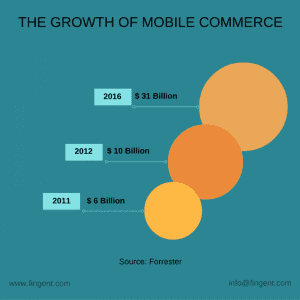
The reason for the surge in m-commerce is obvious. More and more people now prefer the convenience of taking out their smartphones when on the move in a commuter train or when whiling away time at the dentist’s office, rather than take time out to sit in front of a desk, wait for the laptop to boot, and get connected.
Many e-commerce players, quick to spot the trends, have come up with responsive mobile websites and rolled out native mobile apps, to facilitate the mobile-savvy customer. In fact e-tailers no longer have a choice; as 57% of customers won’t even recommend businesses with poor mobile sites, leave alone patronize it. However, most of the early adopters have also discovered merely launching mobile apps or mobile websites is not enough. It is still a fiercely competitive marketplace, and only those who go all out to facilitate the mobile customer wins.
Here are some ways to go all-out, to pamper the highly fickle mobile shopper
Leverage the Power of Simplicity.
The mobile is a consumption-focused device. Play to this strength by making it easy for the user to find what they are looking to consume. Leverage the power of simplicity through a minimalist design and a clean structure. The best apps do not require too much keyboarding or taping on menus, and makes all crucial process, be it registration, login, ordering, check-out, and payment fast and easy. Simplicity and minimalism offers a residual benefit of minimizing data traffic, and speeding up page-loads, which in turns boosts SEO.

Think like a Mobile Customer
The path and trajectory of desktop and mobile user are diametrically different. Successful e-tailers understand the customer’s journey and design the mobile experience around it, delivering a good UX. For instance, since most mobile users shop when on the move, or in the midst of doing something else, anything that shortens interaction time boosts the chances of conversion. Also, since mobile users generally prefer browsing different products, and as such, navigate different screens before actually making a purchase, making it easy to browse many products, add items to the cart, and check out later increases the chances of conversion and making long-term fans. Successful e-tailers also leverage analytics to personalize for the customer, taking into consideration the extremely personal nature of mobile devices.
The path and trajectory of desktop and mobile user are diametrically different. Successful e-tailers understand the customer’s journey and design the mobile experience around it, delivering a good UX. For instance, since most mobile users shop when on the move, or in the midst of doing something else, anything that shortens interaction time boosts the chances of conversion. Also, since mobile users generally prefer browsing different products, and as such, navigate different screens before actually making a purchase, making it easy to browse many products, add items to the cart, and check out later increases the chances of conversion and making long-term fans. Successful e-tailers also leverage analytics to personalize for the customer, taking into consideration the extremely personal nature of mobile devices.
The path and trajectory of desktop and mobile user are diametrically different. Successful e-tailers understand the customer’s journey and design the mobile experience around it, delivering a good UX. For instance, since most mobile users shop when on the move, or in the midst of doing something else, anything that shortens interaction time boosts the chances of conversion. Also, since mobile users generally prefer browsing different products, and as such, navigate different screens before actually making a purchase, making it easy to browse many products, add items to the cart, and check out later increases the chances of conversion and making long-term fans. Successful e-tailers also leverage analytics to personalize for the customer, taking into consideration the extremely personal nature of mobile devices.
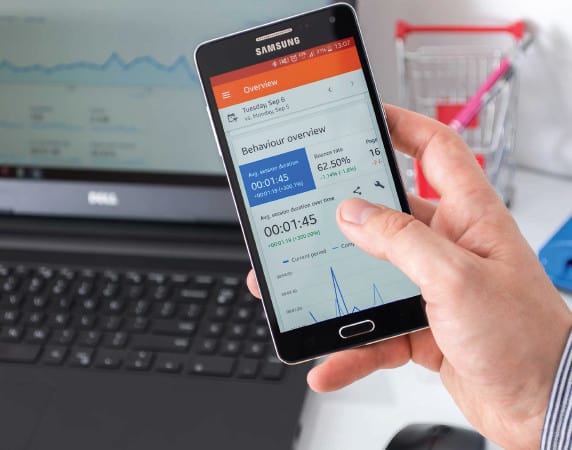
Leverage the Power of Innovation
The overriding focus of successful e-tailers is how to uniquely serve their mobile customers. They strive to make their mobile assets dynamic, through promos, deals, offers, discounts, and more. In this, they innovate to ensure their apps leverage the latest developments in technology, or to ride the latest smartphone trends. The best m-commerce apps leverage the unique capability of mobile devices, such as geo-targeting, location-based services, QR codes, and more, to deliver customized offers and deals, and other value-added services.
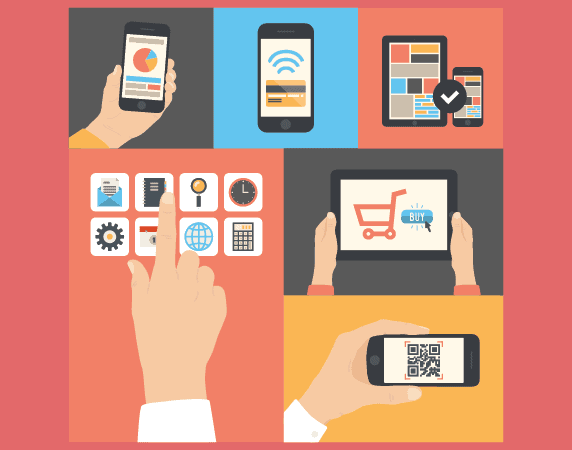
Integrate Mobile with Overall e-Commerce Strategy
A mobile friendly website or a native app may induce the customer to make a purchase immediately. However, for all the efforts put in by the e-tailer, there is always a possibility of sheer hardware limitations driving poor mobile experience. As such, it is important to integrate the mobile strategy with the overall e-commerce strategy, and provide a consistent experience across channels, where a customer may “capture” of the purchase on mobile and complete the transaction on a larger screen. This is even more important as 53% of customers look at products in brick and mortar store and buy online.

Tie in m-Commerce with Social Media
Mobile and social media are almost inseparable. Facebook, Twitter, Snapchat, Instagram, and the likes are on the screens of nearly everyone stuck on the subway, bus, or train. Successful e-tailers who integrate their m-commerce strategy with their social efforts are able to draw in quite a number of social media visitors straight to the m-commerce site.

There is however, no one-size-fits-all solution. The best way to milk the ongoing m-commerce revolution depends on your specific business. Partnering with us to expand and enhance your mobile strategy allows you to leverage our wide experience and expertise, and is a guaranteed way to save time and improve your ROI.
Stay up to date on what's new

Featured Blogs
Stay up to date on
what's new



Talk To Our Experts
So, the customer makes time, waits for the service technician to show up, to troubleshoot the error that has been showing up quite often lately. The clock ticks by and there is no sign of anybody at the door, you muster patience and keep your other important stuff aside for a while longer. But, alas! The guy is nowhere to be found, giving up hope that he would show up, you finally make up your mind to get on with the other stuff. Just when you are about to get busy and make the wasted day productive again, there sounds the door bell. Annoyed as much as you are, you open the door there he stands, the service guy. The moment he gets to work he realises that there are some essential parts missing to go through with the job. Talk about a day going from bad to worse!

For a service company, there is no other bane that shouts out foul louder than the Field Service technician who hasn’t responded, or been helpful, irrespective of the multiple calls and wasted efforts by the customer.
Such scenario that blows the customer satisfaction to 0 on a scale of 10, makes the customer disgruntled and annoyed. But on closer introspection, what the organisations should realise is that these are caused due to the absence of the right tools in the arsenal of the Field service guy. With the advent of time, technology has become an enabler and a good preventive for such issue that affects your customer satisfaction to go down south. Right technology incorporated can help you to optimise service delivery, delight customers and in turn result in transforming your business. The right tools can help you render world class service levels on a consistent basis and make a lot of difference the way your company is perceived by the customer.
Right Approach with the Right Tech
Field service requires efficient ways in which data and information can be provided to a remote technician, away from his workstation, so that he can take the right action without delay. What better way than to use the power of mobility to scale your areas with the most relevant information. Mobility, when coupled with the right technology, can make well-rounded tools that help you to stay informed, relevant and to give the right advantage.

Being mobile-centric can help you have a real-time approach to field service management, such as having visibility and streamlining communication with your field service technicians, giving them real-time access to knowledge and back-end systems, accurate data entry, real-time scheduling and data tracking. This can be best done with a combination of techniques and tools that help the field service technician enable better first-time fix ratios and establish a good customer relationship.
Internet Of Things
IoT for business is becoming the norm and the number of businesses investing in connected technology is rapidly increasing . The connected world that IoT brings forth and the equipment telematics would provide added value of monitoring the equipment health and the efficiency at which it operates. This invariably means lesser downtime because the preventive IoT data can help organisations take real proactive approach when required. This can also go a long way as the information can be utilised to re-engineer the product and make necessary quality improvement, by utilising the equipment performance diagnostics and performance metrics.
Embedded Analytics and Big Data

IoT can churn a lot of data from machines, customers, and products. The challenge lies in turning this data into actionable insights that can improve the bottom line of the company. Being able to replace the paper with mobile devices as the primary input device, can help in reducing the redundancies and save time. The data analytics allow fast and timely action on the vast data from the field giving more real-time feedback on the state of field operations. When the field service personnel is provided with sophisticated analytical tools, they can improve and tweak their operations according to the real-time data input from both the mobile apps and equipment sensors. This visibility enables the field service managers to gather insights on performance, tasks and service quality.
Be Cloud-Based

If there is one technology that has become the backbone of most field service applications, it is the ubiquitous power of the cloud. The cloud plays a critical role in field service mobility by providing the worker access to information whenever, wherever they need it. This leads to better collaboration among the workers by sharing the reports and documents that can be accessed through different devices. Cloud security becomes more sensitive as the workers would have access to data over various networks. This points out to the importance of choosing the right field service software with software upgrades and policies to keep your data secure.
Remote Resolution

With IoT, cloud and analytics it becomes easier for remote resolution of problems. The smart machines can go a step further and raise a flag before something goes awry. IoT would grow bigger, with more connected devices, it is imperative for organisations, that, they leverage the potential to resolve problems via remote resolution. The first time fix rates of organisations can go up since the field service manager has the information to take the required action, ahead of the actual occurrence of the incident.
Network Reliability

The data generated from cloud-based and mobile apps, email and the communication technicians try to establish, can put a lot of strain in the underlying infrastructure of Network. The investment in mobile solutions means that the network in which they operate should be able to take this load and run with it effortlessly, without any glitches. Neglecting the requirement of a reliable network can impact performance, handicap productivity and make the devices less reliable with high traffic. The Hybrid clouds, Virtual servers and high capacity storage provides the network with scalability, flexibility and keeps it reliable.
Security
With the power of IoT and an anywhere, anytime expectation of services and data, there are more points in the grid, where possible security issues may arise. The security concerns would be a primary issue that the organisations should be paying attention to, advanced security applications and an increase in financial commitment to prevent attacks would go a long way in securing the overall setup. Security should ideally begin with the user being educated with the do’s and don’t’s on how to be secure with mobile devices, and then it is essential that the devices be updated with tools and protocols to limit security issues.
Predictive Maintenance

The connected devices enable a field service capability that emphasises more on preventive maintenance rather than firefighting when things go wrong. The preventive nature of work empowers the organisation to give higher levels of customer service with little or no downtime. This can lead to stronger foundation between the business and the customer by keeping the business up, devoid of any hiccups or downtime. The predictive power of IoT-connected devices can automate the field service process and trigger service calls when something needs a maintenance.
Stay up to date on what's new

Featured Blogs
Stay up to date on
what's new



Talk To Our Experts
Every month almost 50,000 apps are released to the app store, along with almost 20,000 games
This means that, on an average, around 20,000 apps and games are released to the app store per day.
In March this year, there were 41,801 apps and 17,103 games submitted to the app store, making it a total of 58,904 apps and games.
So what does all this mean for app developers?
On one hand, it means that the competition is real and it is not with just the apps in your vertical. Secondly, it implies that it takes more than just a regular old good quality app, to make it successful.
What you need to do
It is all about leveraging the right metrics. You need to measure the right metrics and alter your apps according to them.
That way you get to analyze where your apps stand in the current scenario and make favourable changes to deliver a 5 star rated mobile app.
Now let’s get into the metrics.
Important Application Metrics that Developers should Focus on
App Crashes
Mobile apps do crash, at some point during its use. There is a certain crash rate that measures the number of crashes per app load (app load basically means the launch of an app), which is typically 1-2%, depending upon the kind of app, its usage and the like. You get these details on your app store.
Network Errors
 These are basically the HTTP errors that show up every time the app is interfacing to a networked service. These can often lead to app crashes and delay in response time, even after several retries.
These are basically the HTTP errors that show up every time the app is interfacing to a networked service. These can often lead to app crashes and delay in response time, even after several retries.
API Latency
It is common to make use of several services and APIs for your apps. Latency is the time period between a request and a response. In other words, the round time from a request to a response. Ideally, it is best to keep it at 1 second.
Monthly Active User/Daily Active User
The MAU or the DAU is a rough measure of the user base of the application. You need to keep regular track of this particular metric, and see if it’s growing or shrinking or not moving at all (stagnant), to get a coarse idea about the success of your app. This is particularly important if your revenue model focuses on advertising, because it clearly calls for a substantially large user base to be successful.
Metrics related to Devices and OS
Apps are used across a wide range of devices. Getting to know where your key users use your app, whether it is on a smartphone or a tablet, and on what OS or OS version (whether it is iOS 8 or 7 etc.), can be useful in helping you focus the efforts on just where the users are.
Retention Rate
 Retention rate is the percentage of users who return to your app, depending on the date of their first visit. Also known by the name of “cohort” tracking, it allows you to identify your most engaging and valuable users. This in turn, lets you target your personalization efforts towards important users.
Retention rate is the percentage of users who return to your app, depending on the date of their first visit. Also known by the name of “cohort” tracking, it allows you to identify your most engaging and valuable users. This in turn, lets you target your personalization efforts towards important users.
Length of Session
This is the time length between the opening of the app and closing. It lets you see how much time your users are spending on your app individually. It is also an indicator of your user’s engagement level. The more the session length, the more is their engagement.
Acquisition
Your customers may find your app through a number of channels, like a random search in the app store, by word-of-mouth, through in-app referrals and such other things. The acquisition cost allows you to see where your users are coming from, that is, through which of those channels mentioned. It also helps you analyze their behaviour once they start using your app. It shows the value driven by the users when they get immersed in the app.
Apart from these, there is another metric that can be derived from the data available in the store, related to app submissions.
A Sustained Growth Rate
 Every year, and as a matter of fact, every month, we can almost definitely see an increase in the number of apps released to the app store. When you take a year by year comparison, you will be able to see that every month has seen a growth from the previous year. When you draw them on a graph, you will find that the lines never intersect. Such a steady and consistent growth pattern, indicates a market that has a lot of momentum.
Every year, and as a matter of fact, every month, we can almost definitely see an increase in the number of apps released to the app store. When you take a year by year comparison, you will be able to see that every month has seen a growth from the previous year. When you draw them on a graph, you will find that the lines never intersect. Such a steady and consistent growth pattern, indicates a market that has a lot of momentum.
And finally, the most important app metric:
The App Store Star Rating
This is the most public of all metrics. It provides a clear indication of the success of an app and its impact on users. It is something that the users pay attention to as well. A poor rating in the app store can have a lot of bad consequences in the long run. Hence, you need to make sure that, at any cost, your app has a good rating.
These are some of the major app metrics that developers need to take care of. CTOs too, need to make sure that their developers are all aware of these metrics, and that they know how to measure them effectively to create successful mobile apps.
Need help in identifying those metrics that matter? Talk to our experts.
Stay up to date on what's new

Featured Blogs
Stay up to date on
what's new



Talk To Our Experts
What seemed to be a far-fetched idea or an unclear, undefined entity, a few years ago, is what is ruling the world of business today. Enterprise mobility.
People are all for the concept of “bringing their own devices” at their workplaces these days. More than 60% of workers have access to their company data or work through their smartphones and tablets. Interestingly, only about a third of business enterprises have any kind of BYOD (Bring-Your-Own-Device) management strategy in place.
“People are bringing their own devices, but in many cases, they and their companies are not taking care of those devices and the applications on them appropriately.”, says Richard Absalom, consumer impact technology analyst at Ovum.
It is very important to have a proper Enterprise Mobility Management strategy for every organization, especially since most of them are spending a pretty significant amount on mobility.
Here is what you can do to better manage enterprise mobility.
Involving Everyone
Any BYOD policy has to be developed with inputs from all over the organization. Driven by the CIO, BYOD management efforts should involve everyone from developers to users to the IT team. Even the human resource and legal departments have to be included. As it means an entire culture change in the organization, it necessitates the need for everyone to be on the same page, about what can and cannot be accessed over personal devices.
Smartphone Technologies
 The use of mobile devices automatically implies the use of various technologies offered by them such as Global Positioning System (GPS) receivers, cameras, audio recorders and other sensors. Widespread use of such technologies across the organization may cause loss of data and even loss of important intellectual property to be looming concerns. Imagine the consequences of loss of an in-house video of an application’s development processes! Worse yet, are the legal implications of the same, or of other videos involving the organization’s officials in compromising positions. Hence, BYOD policies should be formulated after taking into consideration these aspects as well.
The use of mobile devices automatically implies the use of various technologies offered by them such as Global Positioning System (GPS) receivers, cameras, audio recorders and other sensors. Widespread use of such technologies across the organization may cause loss of data and even loss of important intellectual property to be looming concerns. Imagine the consequences of loss of an in-house video of an application’s development processes! Worse yet, are the legal implications of the same, or of other videos involving the organization’s officials in compromising positions. Hence, BYOD policies should be formulated after taking into consideration these aspects as well.
An Exit or Loss Policy
While devising BYOD policies, something that people generally tend to miss out, is an exit strategy. When an employee in any department of an organization leaves, he will be carrying a lot of information concerning his department on his smartphone, with him. This is a huge loss for the organization.
“When an employee leaves, say in sales, and they take all of the contacts on their personal phone, that is a big corporate asset that goes missing.”- Absalom
Hence, you need to develop appropriate theft, loss as well as exit policies. Along with technical issues you need to raise the security stakes. You need to find a balance with all these features and risks, so as to protect your employees’ personal information as well as your business reputation.
Insecure WiFi
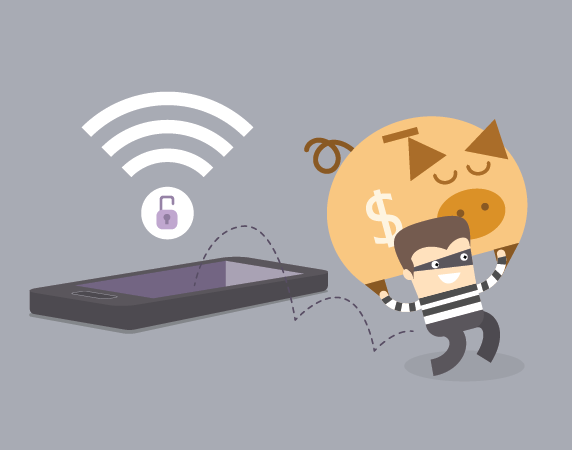 Usage of insecure Wifi networks might need separate provisions in a BYOD policy since their security measures are very limited. For example, some WiFi networks may be labeled as “off-limits” on the basis of security alerts. Devices used in an enterprise should be protected against possible loss of data and attacks. An organization has to make sure that all the personal devices are well in line with the enterprise security standards. Encryption and access control are ways in which valuable corporate data residing on any device can be protected.
Usage of insecure Wifi networks might need separate provisions in a BYOD policy since their security measures are very limited. For example, some WiFi networks may be labeled as “off-limits” on the basis of security alerts. Devices used in an enterprise should be protected against possible loss of data and attacks. An organization has to make sure that all the personal devices are well in line with the enterprise security standards. Encryption and access control are ways in which valuable corporate data residing on any device can be protected.
User Credentials
Credentials for users, such as usernames and passwords, need to be created securely with utmost care. Credentials which may be sufficient for certain kinds of applications may not be suitable for other kinds of applications that need more security. Short number strings for example,while may be appropriate authentication for a user on game leaderboards and scoreboards, they won’t be enough for a social networking application.
All of these practices call for crisp and clear policy guidelines. Their compliance needs to be made mandatory as well. You need to make sure that all your employees are well aware of the rules regarding joining, leaving or altering their role or participation in a BYOD initiative. Signatures on policy agreements need to be made compulsory. Absalom also said that it would be good to have all employees agree to legally upholding their policies and to getting their devices locked on events of it being stolen, lost or compromised in any way.
Hence, if well managed, enterprise mobility can be the best thing that ever happened to your business. Keep the above pointers in mind, embrace mobility and manage it efficiently.
Stay up to date on what's new

Featured Blogs
Stay up to date on
what's new



Talk To Our Experts
Field service businesses are trying to capitalize on the advantages offered by today’s technologies. Mobile technology, being the most significant among them, has taken the industry by storm, offering increased productivity gains, streamlines work processes, improved field agent communications, increased first-time fix rate, shortened billing cycles, reduced overhead of paper-based field service management and so on. The infographic puts together some recent trends, impacts and state of mobile technology in Field Service Businesses.
Interested in learning more on enabling your field team with mobile technologies? We’d love to know your business requirements and help accordingly, contact our specialist team now.
Share this Infographic On Your Site
Stay up to date on what's new

Featured Blogs
Stay up to date on
what's new














